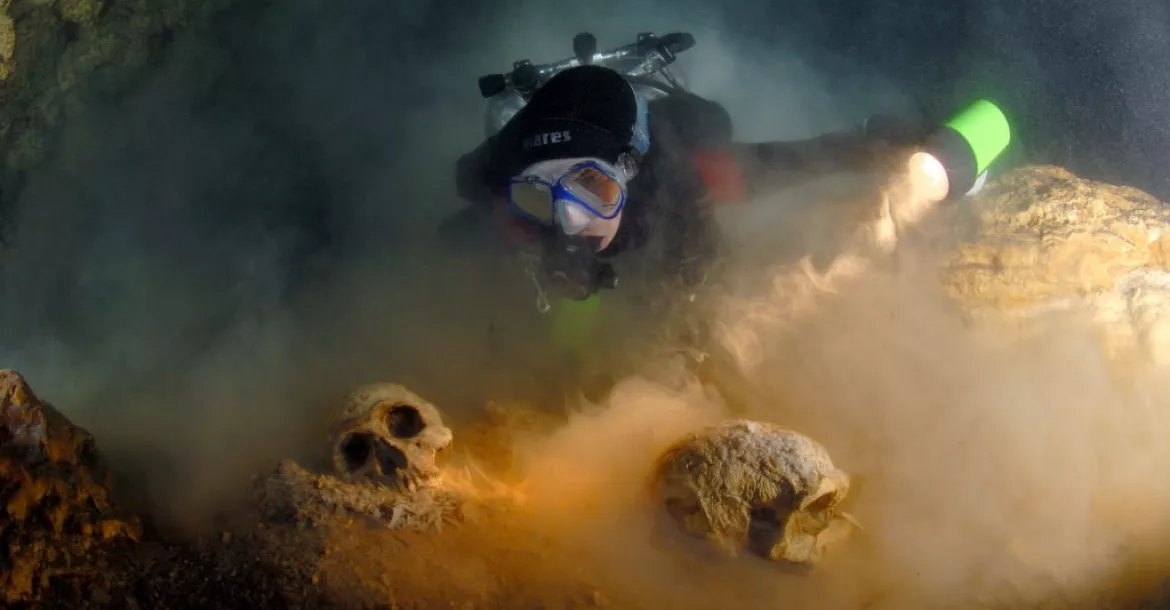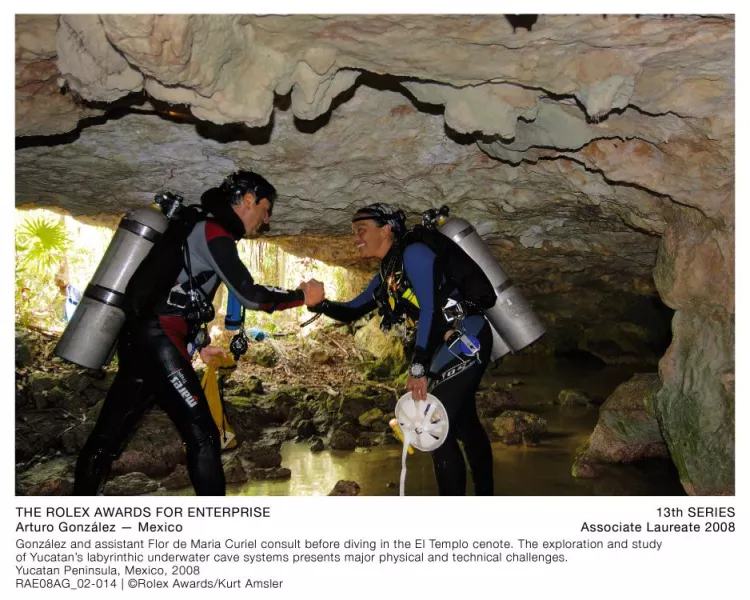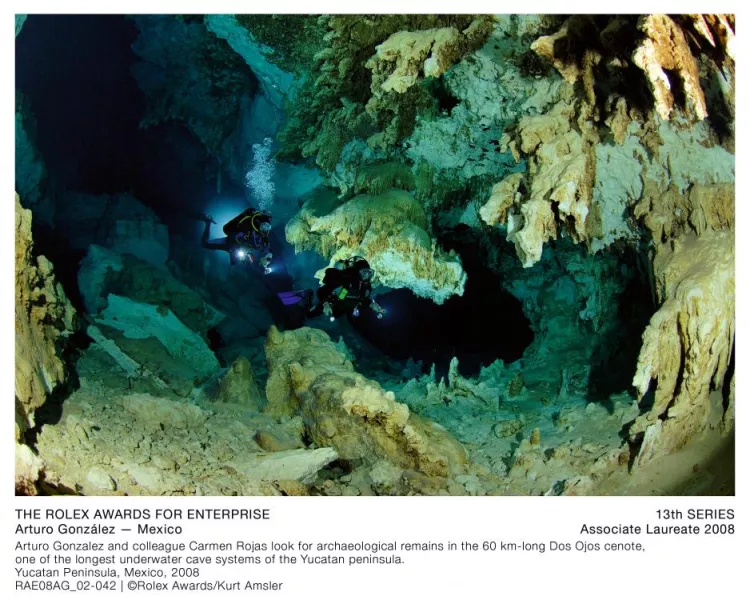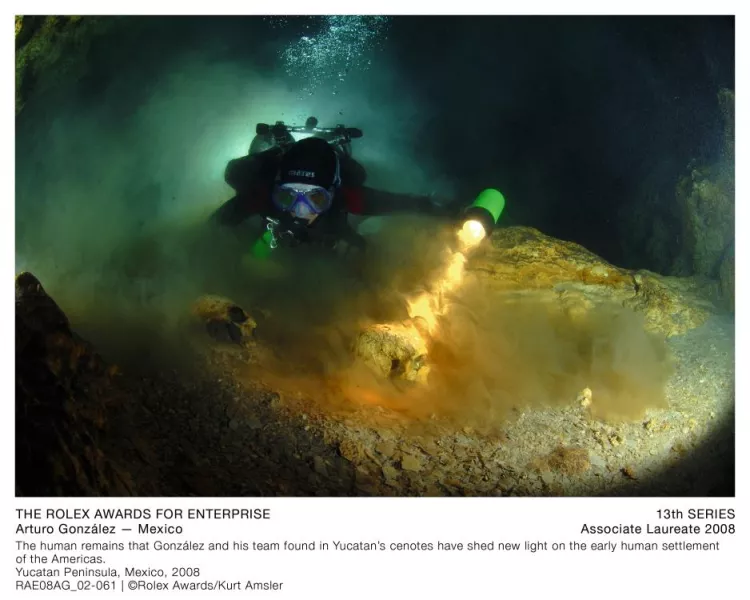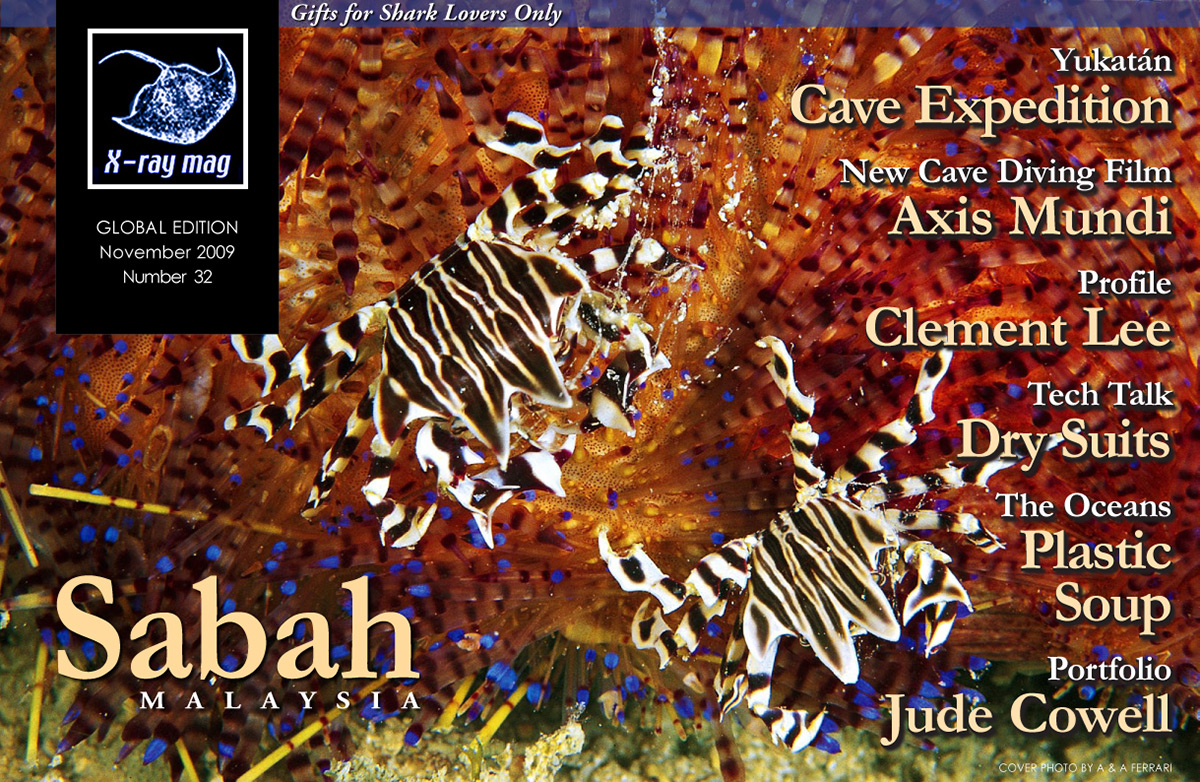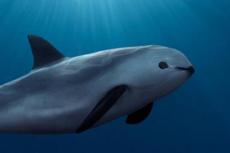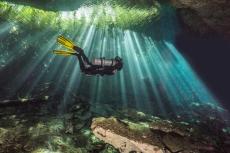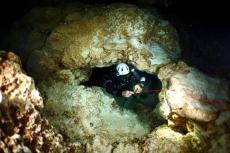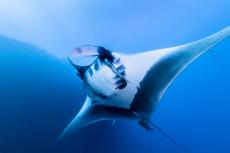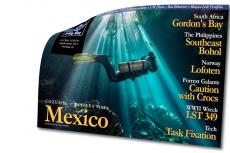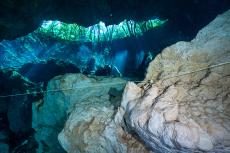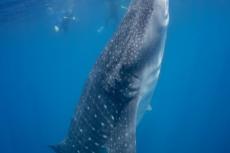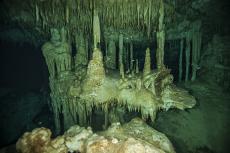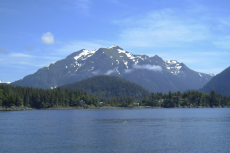Discovery of prehistoric remains in the Yucatan.
Contributed by
For centuries these openings have provided inhabitants with access to fresh water, and the inaccessibility of the deep caves beneath the openings has long beckoned the adventurous, though physical challenges limited how far they could go.
In recent years, however, technological developments in underwater equipment have made it easier for divers to go farther into the networks of dark tunnels branching out from the submerged caves, and reports began to emerge about this dark underworld and its store of human and animal remains.
Arturo González, a Mexican biologist and underwater archaeologist working with the Instituto Nacional de Antropología e Historia, decided to launch a systematic examination of the flooded caverns in 1999. He worked together with a team of specialists including cave divers, archaeologists, palaeontologists and photographers, who would face technically difficult and physically challenging dives of up to six hours. The multidisciplinary team excavated three human skeletons from the depths, then carefully studied and analysed them. What they found startled the scientific community.
The skeletons are possibly older than any other human remains in the Americas. One in particular has been estimated by three foreign laboratories to be more than 11,600 years old. Furthermore, the skeletons bear no resemblance to the Maya who came to dominate the region thousands of years later, and whose remains and artefacts are found near the openings of the cenotes.
If anything, according to González, the newly discovered skeletons have a cranial morphology resembling that of people in eastern Asia. The findings are forcing the scientific community to reassess its theories about when and how early humans travelled to the Americas.
“What we’ve discovered is a piece in the puzzle of human evolution,” says 44-year-old González, who has been director of the Museum of the Desert in the northern Mexican city of Saltillo since 2002. “But there are a lot of other pieces missing from the puzzle. We have one important piece, but it doesn’t match any other existing part in a way that would help us understand how early humans colonized the Americas.”
González first learned scuba diving as part of his university studies on biology, but it was a National Geographic documentary about the discovery, by underwater explorer James Coke, of an ancient fireplace 30 metres below the surface that inspired him. “For me this was unbelievable,” says González. “Caves have always interested me, this space below the ground that for many indigenous groups signifies the mother’s womb.
When I saw this documentary about fire pits under the water, I began to travel to these areas to explore them. We got to know James Coke, a pioneer in the exploration of these spaces, and he alerted us to other discoveries he’d made. Thanks to him we began to form a project that since 1999 has been making important discoveries about the ancient history of the Americas.”
Cave exploration
Cave divers and speleologists have been exploring Yucatán’s submerged cave systems since the 1980s, collecting geological, archaeological and palaeontological evidence that is now crucial to González. Deep in the caverns, González and his colleagues retrieved fossils that are between 10,000 and 60,000 years old, including those of extinct camelids, giant armadillos and horses. All are from the Pleistocene Epoch, when the Yucatán was covered not with low forests but with dry grasslands. In at least one submerged cave north of Tulum, near the Caribbean coast, the divers found another ancient fireplace, whose carbon traces of partially burned camelid bones suggest that the prehistoric humans there survived in part on the meat of an animal whose species disappeared at the end of the Pleistocene.
When prehistoric people were cooking camelid meat, the sea level was more than 100 metres below where it is today. González believes these people may have used the caves not only as rudimentary kitchens, but also as pathways to water sources.
There is also strong evidence that dead bodies were placed in special caves far below the ground, perhaps to protect them from natural predators. But then a massive shift in global climate produced rapid rises in the sea level, as well as the intricately linked water table inland, and the burial sites and kitchens were all flooded – to remain unseen until cave divers discovered them millennia later.
Rolex funds research
Funds from the Rolex Award will allow González to field a team for at least another year of research; the group intends to focus on the Chan Hol cave, where a fourth skeleton has been discovered, but not yet removed or analysed. The more skeletons examined, González says, the more comparisons can be made to similar human remains in other parts of the world —perhaps even putting more pieces into the puzzle of human history.
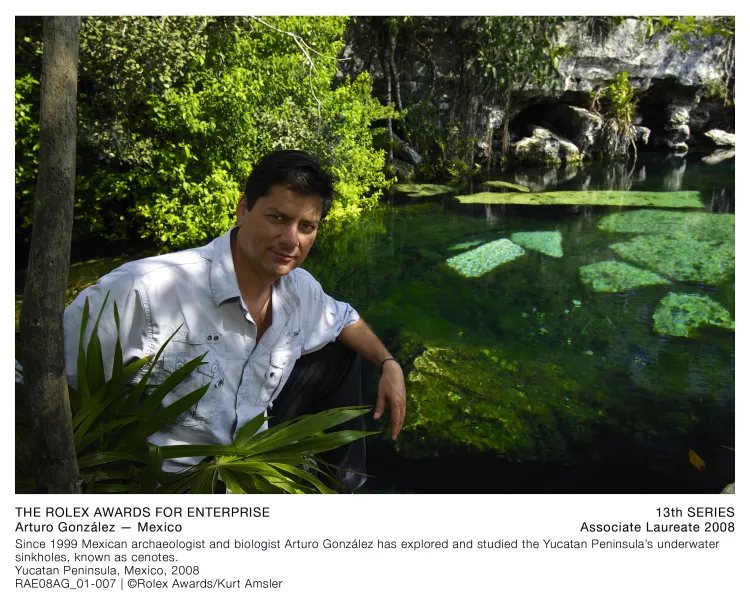
Beyond that, González says he and his colleagues will focus on trying to understand the lives of these ancient people, especially how they used different caves for different purposes —clues that will lead researchers to move beyond the bones and toward a better understanding of prehistoric life.
These findings have greatly increased interest in the cenotes, leading González and his colleagues to work with residents of local villages to protect the rare treasures from damage and looting. They have also encouraged the villagers to speak out against the contamination of the underground waters by unrestrained tourist development along the so-called Mayan Riviera. Cenotes hold vital freshwater reserves, yet millions of litres of water are pumped from these aquifers every day, far exceeding their natural regeneration rate in some parts of the peninsula. In remote areas, cenotes are sometimes used as waste dumps that spread organic and chemical pollution.
As knowledge of the past increases, the challenge of getting in and out of the twisting labyrinths remains a dangerous pursuit in the name of science and discovery. With complicated logistics and multiple equipment combinations to minimize the risks, the long and disorienting trips underwater remain physically and emotionally gruelling.
A typical underwater expedition can take six hours, including the first hour to reach the cave of interest, an hour to carry out research, and then, given the need for decompression stops along the way, a four-hour return trip to the surface. Fortunately, the scientists are assisted with this aspect of their work by a small cadre of highly trained, professional divers whose knowledge of the systems is a precious resource.
Many years of work still lies ahead for González in what, according to Prof. Wolfgang Stinnesbeck, specialist of Mexican geology and palaeontology at the University of Heidelberg, “is certainly one of the most fascinating and outstanding research projects in modern geosciences and has already delivered an impressive number of outstanding results”. And it’s a race against time given the Yucatán’s burgeoning tourist development. Yet for González, the risks the divers take as they plunge into the watery windows on the past are worth the challenge.
“As an inhabitant of the Americas, I’m interested in knowing who these people were, where they came from, and when their first steps in the Americas occurred,” he explains. “In these sites, we can find the archaeological contexts just about as they were left by the people of the Ice Age. It’s a great treasure and it’s my passion to get there and discover them, and be able to interpret them in order to share a new understanding of the history of humanity.” ■

